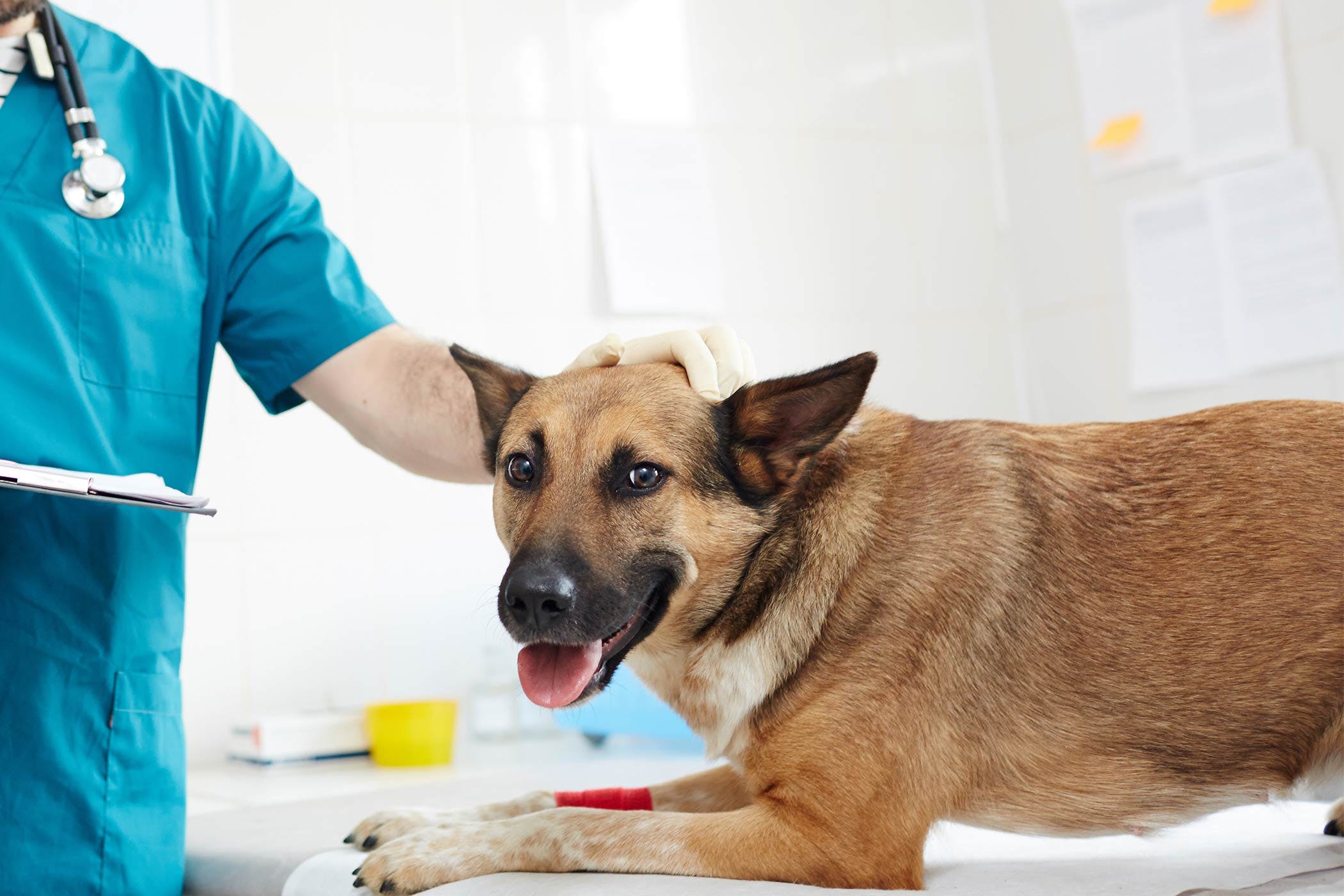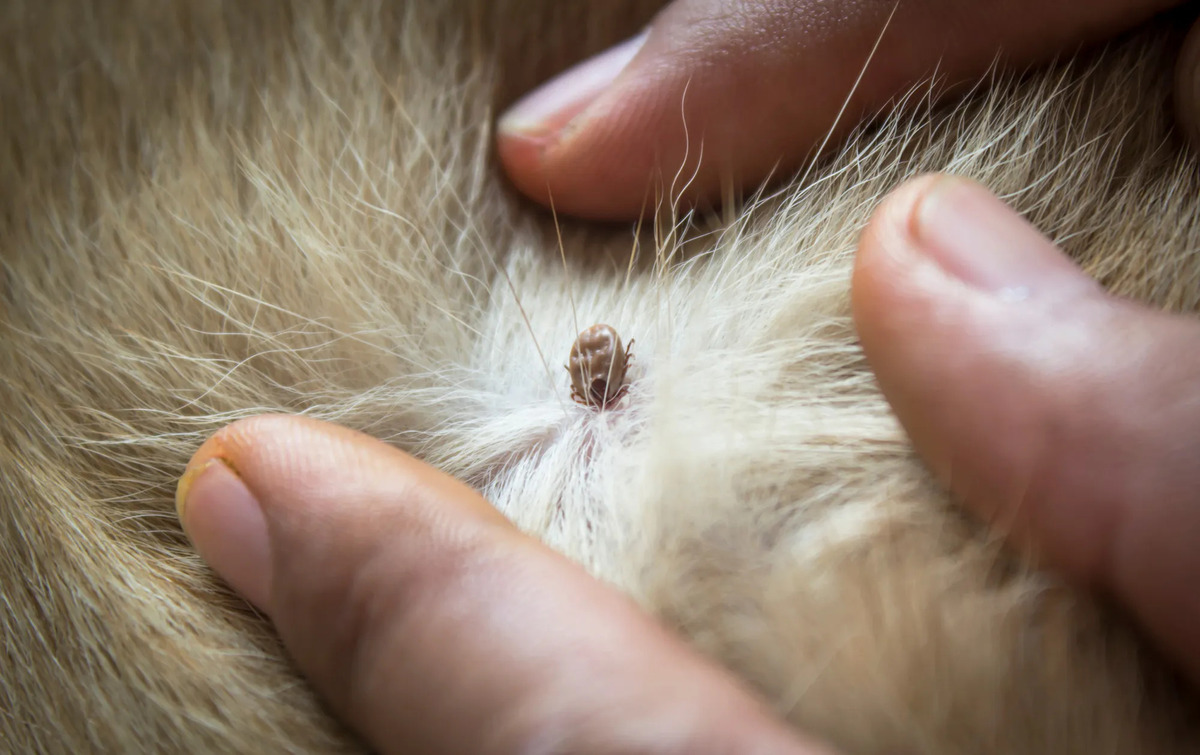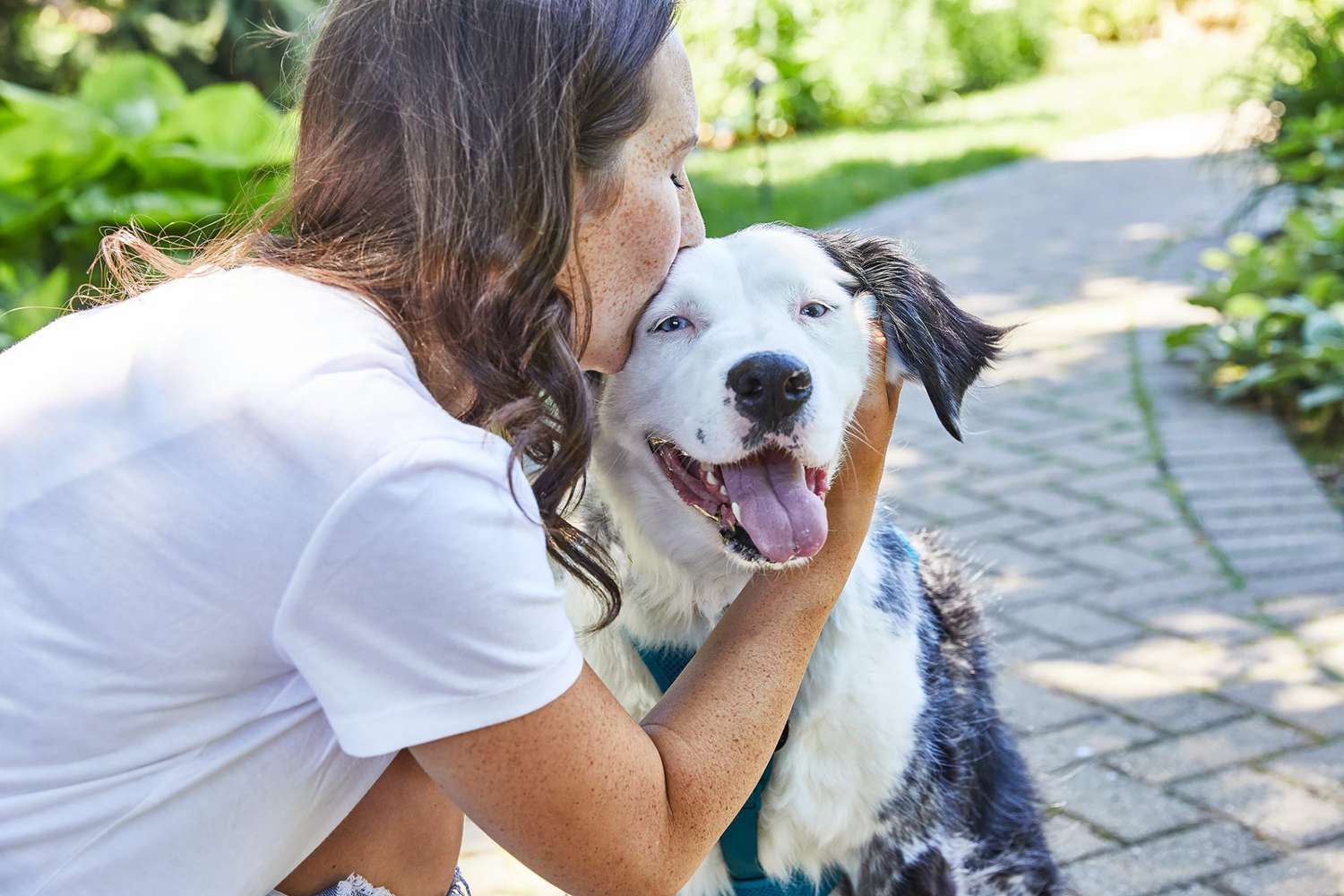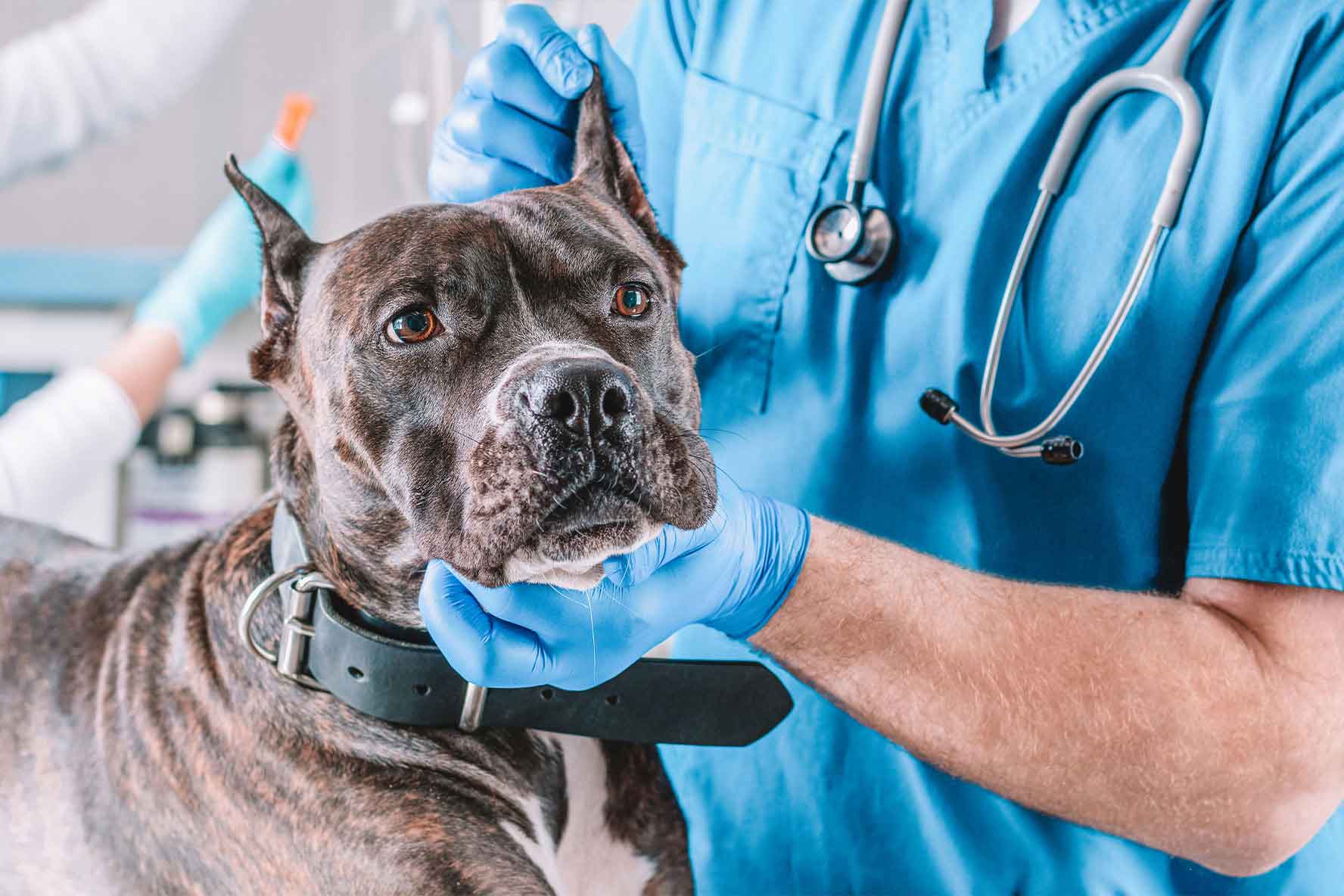Home>Health & Wellness>Common Health Issues>What To Do If Your Dog Has Ticks


Common Health Issues
What To Do If Your Dog Has Ticks
Published: February 5, 2024
Learn how to handle common health issues like ticks on your dog. Discover effective solutions to keep your furry friend healthy and happy.
(Many of the links in this article redirect to a specific reviewed product. Your purchase of these products through affiliate links helps to generate commission for Pawsomeoldies.com, at no extra cost. Learn more)
Table of Contents
Introduction
Ticks are small, blood-sucking parasites that can pose a significant threat to the health and well-being of your furry friend. These pesky critters are commonly found in grassy and wooded areas, making dogs susceptible to infestations during outdoor adventures. As a responsible pet owner, it's crucial to be vigilant and proactive in protecting your canine companion from these tiny but troublesome pests.
When left unchecked, ticks can transmit a variety of diseases, including Lyme disease, ehrlichiosis, and anaplasmosis, among others. These illnesses can cause a range of symptoms, from mild discomfort to severe complications, and may even be life-threatening in some cases. Therefore, understanding how to identify, remove, and prevent tick infestations is paramount in safeguarding your dog's health and ensuring their continued happiness and vitality.
In this comprehensive guide, we will delve into the essential steps you need to take if your dog has ticks. From recognizing the signs of tick infestation to safely removing these parasites and implementing preventive measures, we will equip you with the knowledge and tools to effectively manage this common health issue. By familiarizing yourself with the best practices for tick control and care, you can minimize the risks associated with tick-borne diseases and create a safe environment for your beloved pet.
So, if you've ever wondered what to do if your dog has ticks, you've come to the right place. Let's embark on this educational journey together and empower ourselves to protect our furry companions from the perils of tick infestations.
Identifying Ticks on Your Dog
Spotting ticks on your dog is the first step in addressing a potential infestation. These tiny parasites can vary in size, ranging from as small as a poppy seed to as large as a small grape when engorged with blood. To effectively identify ticks on your dog, it's essential to conduct regular inspections, especially after outdoor activities in grassy or wooded areas. Here are some key indicators to help you recognize these troublesome pests:
-
Visual Inspection: Take the time to visually inspect your dog's fur, paying close attention to areas where ticks are commonly found, such as the ears, neck, head, and between the toes. Ticks may appear as small, dark specks or bumps on the skin, particularly if they have already latched onto your dog and begun feeding.
-
Tactile Sensation: Run your hands over your dog's coat, feeling for any unusual bumps or rough textures. Ticks can be detected by touch, especially when they have embedded themselves into the skin. Be gentle and thorough in your examination to ensure no ticks go unnoticed.
-
Distinctive Features: Ticks have a distinct appearance, with their bodies elongated and often dark or reddish-brown in color. When engorged with blood, they may swell in size, becoming more noticeable on your dog's skin. Additionally, ticks have eight legs, which distinguishes them from other common parasites like fleas.
-
Behavioral Changes: Keep an eye out for any behavioral changes in your dog, such as excessive scratching, licking, or discomfort. These signs may indicate the presence of ticks, as the parasites can cause irritation and distress to your pet.
By familiarizing yourself with these methods of identification, you can promptly detect and address any tick infestations on your dog. Early detection is crucial in preventing the potential transmission of tick-borne diseases and minimizing the impact of these parasites on your dog's well-being. Regular grooming and thorough inspections will help you stay vigilant and proactive in protecting your furry friend from the risks associated with ticks.
Removing Ticks Safely
When it comes to removing ticks from your dog, it's essential to approach the process with care and precision to minimize the risk of injury or infection. Here's a step-by-step guide to safely and effectively removing ticks from your furry friend:
-
Gather the Necessary Tools: Before initiating the removal process, gather a pair of fine-tipped tweezers, gloves, rubbing alcohol, and antiseptic ointment. These tools will help you handle the ticks and disinfect the affected area afterward.
-
Prepare the Environment: Choose a well-lit area with minimal distractions to ensure a steady and focused approach. Calm your dog and provide reassurance to keep them relaxed during the procedure.
-
Wear Protective Gear: Put on gloves to protect yourself from potential exposure to tick-borne pathogens. This precaution is crucial in safeguarding your own health while tending to your dog.
-
Grasp the Tick: Using the fine-tipped tweezers, carefully grasp the tick as close to the skin's surface as possible. Avoid squeezing or crushing the tick, as this can release additional pathogens into your dog's bloodstream.
-
Remove the Tick: With a steady hand, gently pull the tick straight out, exerting a steady and even pressure. Avoid twisting or jerking motions, as these can cause the tick's mouthparts to break off and remain embedded in the skin.
-
Disinfect the Area: After removing the tick, disinfect the bite site with rubbing alcohol to cleanse the area and reduce the risk of infection. Additionally, apply a small amount of antiseptic ointment to promote healing.
-
Dispose of the Tick: Place the tick in a sealed container or bag, ensuring it is securely contained to prevent any potential contact. This step is important for further identification or disposal of the tick.
-
Monitor Your Dog: Keep an eye on your dog for any signs of discomfort or adverse reactions following the tick removal. If you notice any unusual symptoms, consult your veterinarian promptly.
-
Seek Veterinary Guidance: If you are unsure about the proper technique for tick removal or if the tick has been attached for an extended period, seek guidance from your veterinarian. They can provide expert advice and address any concerns regarding potential tick-borne diseases.
By following these steps, you can safely and effectively remove ticks from your dog, minimizing the risk of complications and promoting their overall well-being. Remember to stay vigilant and conduct regular tick checks to ensure your dog remains free from these pesky parasites.
Preventing Future Tick Infestations
Preventing future tick infestations is a crucial aspect of maintaining your dog's health and well-being. By implementing proactive measures and integrating tick prevention into your pet care routine, you can significantly reduce the risk of tick-borne diseases and ensure a safe environment for your furry companion. Here are some effective strategies to prevent future tick infestations:
1. Use Tick Prevention Products
Invest in quality tick prevention products such as spot-on treatments, tick collars, and oral medications specifically designed to repel and eliminate ticks. These products provide a protective barrier against ticks, effectively reducing the likelihood of infestations. Consult with your veterinarian to determine the most suitable tick prevention options for your dog based on their age, health status, and lifestyle.
Read more: What To Do When Your Dog Has Fleas
2. Maintain a Tidy Outdoor Environment
Regularly mow your lawn, trim shrubs, and remove leaf litter to minimize tick habitats in your outdoor space. Creating a well-maintained and tidy environment reduces the likelihood of ticks thriving in your yard, thereby lowering the risk of exposure to these parasites during outdoor activities.
3. Perform Routine Tick Checks
Incorporate regular tick checks into your grooming routine, especially after outdoor excursions. Thoroughly inspect your dog's coat, paying close attention to common tick hiding spots such as the ears, neck, and between the toes. Promptly removing any ticks you find can prevent infestations and reduce the chances of disease transmission.
4. Utilize Tick-Repellent Sprays
Consider using tick-repellent sprays or powders when venturing into areas known to harbor ticks. These products can provide an additional layer of protection for your dog during outdoor adventures, particularly in environments where ticks are prevalent.
5. Create Physical Barriers
Implement physical barriers such as fencing to restrict your dog's access to tick-prone areas, such as dense vegetation and wooded areas. By limiting exposure to high-risk environments, you can minimize the likelihood of tick encounters and infestations.
6. Regular Veterinary Check-ups
Schedule routine veterinary check-ups to monitor your dog's overall health and discuss tick prevention strategies with your veterinarian. They can provide valuable insights and recommend preventive measures tailored to your dog's specific needs, contributing to a comprehensive approach to tick control.
By integrating these preventive measures into your dog care regimen, you can effectively reduce the risk of future tick infestations and safeguard your dog's well-being. Consistency and diligence in tick prevention efforts are key to creating a safe and enjoyable environment for your beloved pet.
When to Seek Veterinary Care
Knowing when to seek veterinary care for your dog in the context of tick infestations is crucial for ensuring their health and well-being. While proactive measures and home-based tick removal are essential, certain circumstances warrant professional veterinary attention. Here are the key indicators that signify the need for veterinary care in the context of tick infestations:
1. Prolonged Tick Attachment
If a tick has been attached to your dog for an extended period, it may increase the risk of disease transmission. Prolonged attachment allows the tick to engorge fully, potentially leading to a higher likelihood of pathogen transfer. In such cases, seeking veterinary care is advisable to assess the potential risks and determine the appropriate course of action.
2. Signs of Infection
After removing a tick, closely monitor the bite site for any signs of infection, such as redness, swelling, or discharge. These symptoms may indicate an inflammatory response or secondary infection, necessitating veterinary evaluation. Timely intervention can prevent the escalation of infection and facilitate prompt treatment.
3. Persistent Symptoms
If your dog exhibits persistent symptoms following a tick infestation, such as lethargy, loss of appetite, fever, or lameness, it is essential to seek veterinary care. These symptoms could be indicative of tick-borne diseases or other underlying health issues that require professional assessment and management.
4. Multiple Tick Infestations
In cases where your dog experiences recurrent tick infestations despite preventive measures, veterinary guidance is valuable. Your veterinarian can conduct a comprehensive evaluation to identify potential environmental factors, underlying health conditions, or resistance to tick prevention products, thereby devising a tailored approach to mitigate future infestations.
5. Unusual Behavioral Changes
Unusual behavioral changes in your dog, such as neurological abnormalities, disorientation, or seizures, following a tick infestation necessitate immediate veterinary attention. These symptoms may signal the presence of tick-borne diseases affecting the central nervous system, warranting prompt diagnosis and treatment.
6. Uncertain Tick Identification
If you encounter a tick species that is unfamiliar or suspect potential exposure to ticks in high-risk regions, consulting with a veterinarian for tick identification and risk assessment is prudent. Certain tick species carry specific pathogens, and accurate identification can guide targeted preventive measures and disease monitoring.
In summary, recognizing the circumstances that warrant veterinary care in the context of tick infestations is pivotal for safeguarding your dog's health. By remaining attentive to the aforementioned indicators and seeking timely veterinary intervention when necessary, you can ensure comprehensive care for your furry companion and mitigate the potential risks associated with tick-borne diseases.












